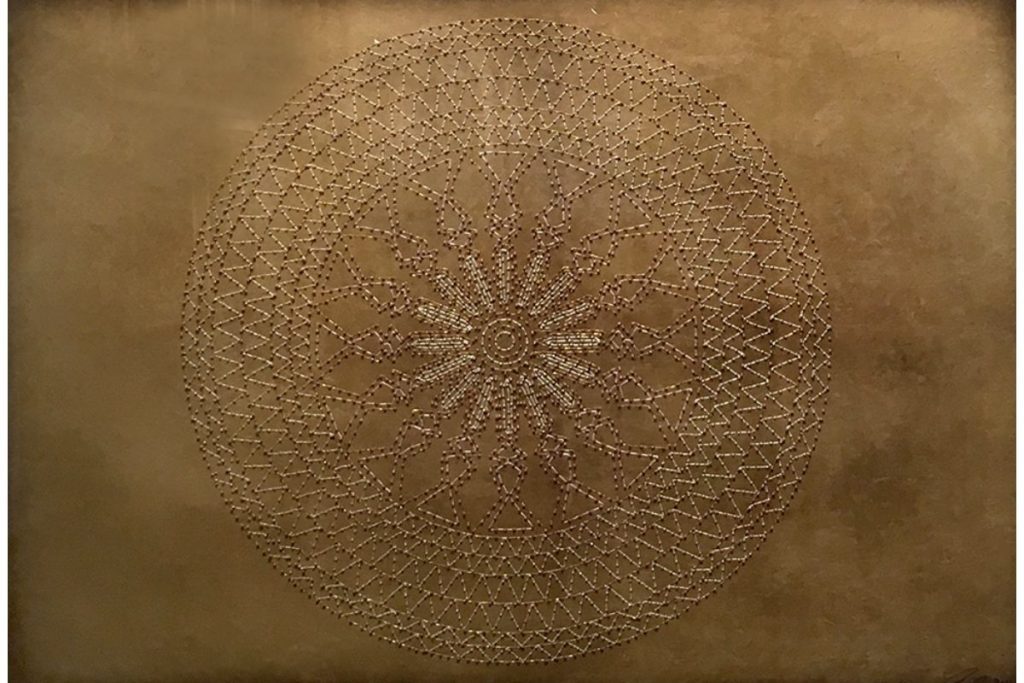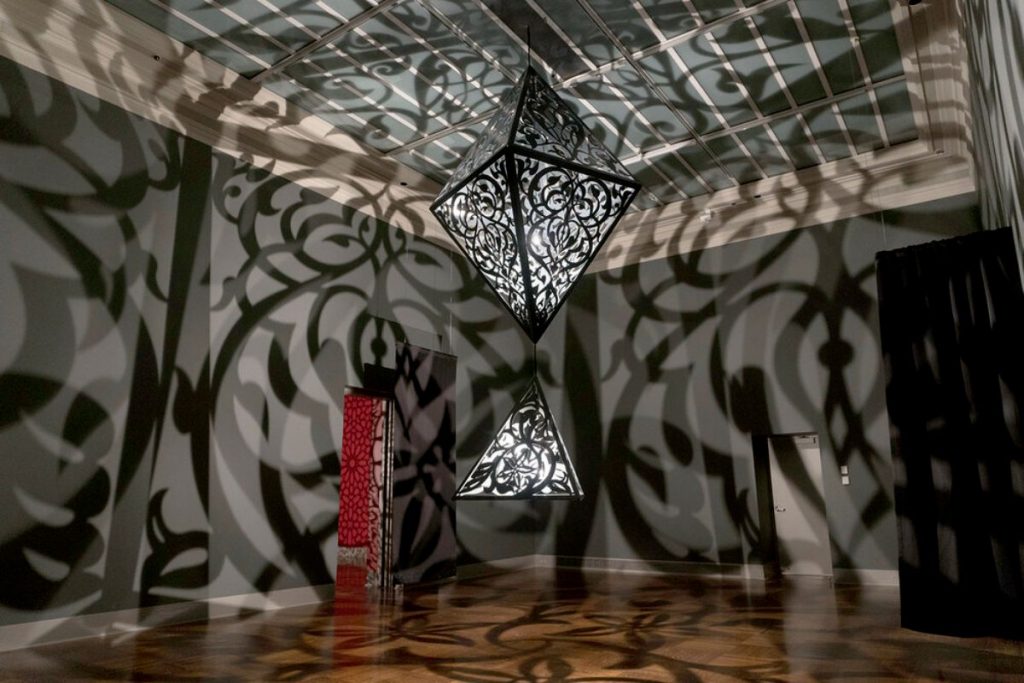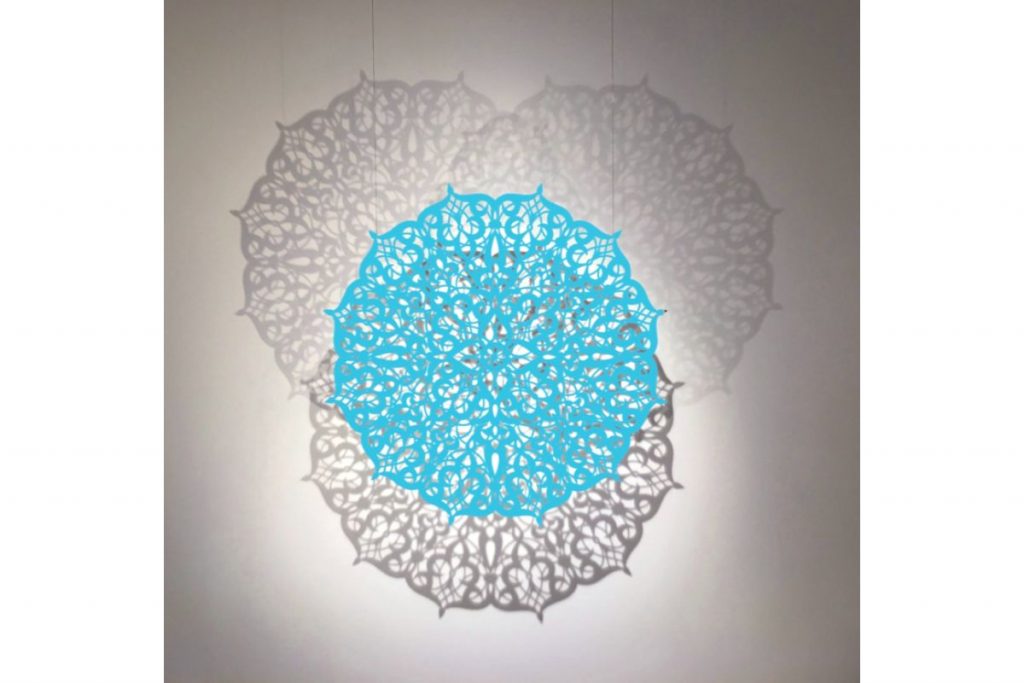Laura Knight in 5 Paintings: Capturing the Quotidian
An official war artist and the first woman to be made a dame of the British Empire, Laura Knight reached the top of her profession with her...
Natalia Iacobelli 2 January 2025
Anila Quayyum Agha is a Pakistani and American artist whose light installations are inspired by Islamic architectural forms. She received her Bachelor of Fine Arts from the National College of Arts in Lahore and also a Master’s in Fine Arts from the University of North Texas. She has exhibited works as a solo artist in numerous galleries and museums. During the 2019 Venice Biennale she participated in an event called She persists together with 22 feminist artists.
Her artistic interests are diverse, comprising drawing and painting, as well as sculpture and light installations. Works created on paper mix many types of media, for example, cutout paper, encaustic, beads, and embroidery. Her more recent works of this nature show the same interest in intricate patterns inspired by arabesques of Islamic architecture.
The exploration of techniques and materials is linked to the artist’s background in textile and fabric design. In her works, she has employed an unusual way of reinventing Islamic architecture patterns through the use of more fragile materials, such as beads and embroidery. This brings into discussion a certain feminine dimension to the explored theme.
Through her artistic process, Anila Quayyum Agha questions the place of textile work in the realm of art. Often regarded as a domestic activity, it is more overlooked than other art forms. The recreation of architecture through light installations from a feminine point of view, inspired for example by art at Alhambra, challenges this view and other patriarchal opinions regarding women mainly in the Islamic world.
The importance of Islamic culture reflects her status as a dual artist pertaining to two worlds. Anila Quayyum Agha is now based in the United States, although she partly studied in Pakistan.

Agha’s detailed, lace-like sculptures and light installations create a space of universal feeling, where everybody can join, irrespective of their cultural background. It is a search for personal unity and a meditation on universal themes such as love and religion. However her works are also about social themes linked especially to the condition of women in contemporary patriarchal societies.
As a whole, the steel sculptures and the mixed-media drawings and paintings show a remarkable blending of abstractions and immediate, stringent topics. They convey the same kind of impression of infinity and exactness as Islamic architecture, but are more anchored in the present than they would seem at a first glance.
This is because the social and political aspects are not openly discussed, through overt visual references. Rather, the artist lets the problems beyond mere image transpire through her unique way of creating. Anila Quayyum Agha’s light installations, as their titles, retain the indefinite character which is also that of Islamic art, so that everyone can find something that resonates with them.

In her light installations, as in the rest of her creations, Agha explores experiences that form the common basis of humanity, as in Alhambra Nights, which express the fundamental maternal feeling:
“In the floral beauty of the patterns and layers, the cuts and embroidery strive to capture the identity, beauty, and femininity of my mother and other mothers – me, you, us – that become obscured by gravestone and shroud. These patterns pay homage to the organic to which death is inevitably linked but from which new life also emerges. The many colored, metallic embroidery threads in these works are often used in women’s wedding dresses in Pakistan but never for shrouds. In stitching these threads into paper, and cutting patterns in steel, I connect the wedding that is believed the beginning of a woman’s life-giving journey, and the funeral that is its ultimate end.”
Artist’s statement, Walking With My Mother’s Shadow, 2016, Aicon Art Gallery, New York, NY, USA. Artist’s website.

If you want to immerse yourself deeper into the swirling world of Anila Quayyum Agha’s sculptures and light installations, you can check the artist’s website. You can also read an interview with another artist using multiple media, Sara Osebold.
DailyArt Magazine needs your support. Every contribution, however big or small, is very valuable for our future. Thanks to it, we will be able to sustain and grow the Magazine. Thank you for your help!